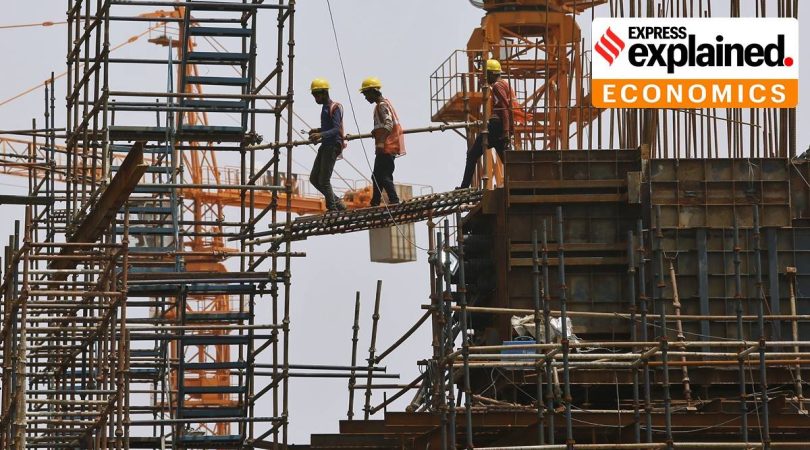[ad_1]
Next week, the government will release the GDP growth estimates for the second quarter (July-September) of the ongoing financial year (2022-23). These estimates will provide some sense of the underlying momentum in economic activities in the country.
At what pace did the economy grow in the first quarter? And what are the expectations in the second quarter?
Government data show that the economy grew at 13.5 per cent in the first quarter (April-June) of 2022-23. However, this number was distorted due to the base effect. Economic activities had taken a big hit in the first quarter of the last year (2021-22) due to the horrific second wave of the pandemic—and this depressed “base” gave an unusual bounce to growth numbers in the first quarter of this year.
In the last monetary policy committee (MPC) meeting, the Reserve Bank of India pegged the economy to grow at 6.3 per cent in the second quarter. According to assessments by economists at ICRA ratings and Bank of Baroda, the economy is expected to grow at 6.5 per cent. But even if growth comes in at 6.5 per cent, it translates to a growth of a mere 2.5 per cent each year from 2019-20.
What are the assessments of growth for the full year?
Recently, the RBI has lowered its forecast for growth for the full year to 7 per cent, down from its earlier assessment of 7.2 per cent. Other analysts have also made similar adjustments. For instance, economists at Crisil ratings have lowered their forecast for the full year to 7 per cent, down from their earlier assessment of 7.3 per cent. Global Ratings Agency Moody’s has also slashed its assessment of the country’s growth to 7 per cent in 2022, down from 7.7 per cent earlier.
So why is the outlook on growth suffering?
In large part, the downward revision in this year’s estimates is because the slowdown in the global economy has already begun to impact India’s exports. In the first quarter (April-June), exports had grown by 24.8 per cent. But in the second quarter, export growth had fallen to a mere 2.8 per cent. In October, exports were actually 16.7 per cent lower than last year.
Even after excluding oil exports which tend to be volatile in nature because prices keep fluctuating, growth of non-oil exports fell by around 17 per cent in October. The declines were broad-based across sectors such as engineering goods, gems and jewellery, and textiles. Such across the board declines are indicative of a sharp slowdown in global demand. This will have grave consequences for India’s growth over the coming months.
In 2021-22, India’s economy was powered by exports. Exports grew by a staggering 44 per cent as both governments and central banks in advanced economies such as the US adopted extremely accommodative policies to cushion their economies from the pandemic.
But central banks across the world have been tightening financial conditions aggressively as they have switched focus to tackle the inflation challenge. Higher interest rates are squeezing household spending in the advanced economies, the effects of which are being seen in the slowdown in India’s exports. Declines of such magnitudes will have a bearing on industrial activity and, as a consequence, on the launch of new investments.
There are also indications that the economic momentum is not the same across sectors in India. Based on the second quarter results of 1,900 companies, economists at Bank of Baroda have estimated that even as the increase in company sales has moderated slightly, net profit growth has marginally declined. However, if from this sample of companies, banks, finance, insurance and IT firms are removed, then the declines are of a much higher magnitude. This does not bode well for the larger economy.
It is possible that the pain being felt by the Indian economy will be more severe next year as even domestic demand will come under pressure as higher interest rates are passed onto consumers. The MPC has raised interest rates from 4 per cent to 5.9 per cent over the past few months to tackle inflation. Crisil Ratings has thus already lowered its forecast for growth next year to 6 per cent, down from its earlier assessment of 6.5 per cent.
[ad_2]
Source link








